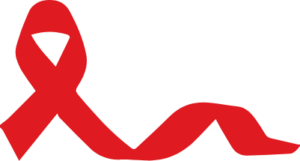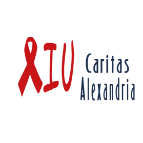03 – 4840138
aiu_caritasalex@yahoo.com
About HIV/ AIDS

1. What is Human Immunodeficiency Virus (HIV):
HIV is the virus that causes AIDS, and it attacks the cells of the immune system in the human body to destroy them and therefore reducing the ability of the immune system to confront viruses and other pathogens.
2.The difference between PLHIV (People lives with HIV) and AIDS patient:
When the infected person becomes a living with HIV, his body is affected slowly and gradually, and he may appear to be in good health, practicing his life normally for long periods until the immune system weakens completely, and shows on him some symptoms of the opportunistic diseases’ and becomes AIDS patient. But with antivirals, the progress of infection can be stopped.
Methods/ modes of transmission of HIV
HIV / AIDS can be spread from infected individuals to others via:
- Sexual transmission:
Unsafe sexual contact of all kinds, the risk of transmission increases if one of the parties has genital ulcer disease - Transmission through infected blood:
- Through transfusion with contaminated blood
- Through contaminated injecting equipment (exchanging and reuse of needles or contaminated syringes), as occurs among drug users by injection.
- Mother-to-child transmission:
A mother can transmit HIV infection to her child during pregnancy or delivery or through breastfeeding.
Methods / modes that do not transmit HIV / AIDS
HIV / AIDS is not transmitted by:
- Daily coexistence with PLHIV:
- Like shaking hands, hugging, or kissing
- using the same utensils of eating and drinking
- Sitting next to him/ her or using the same toilet
- It is not transmitted through tears, saliva, and sweat
- It is not transmitted by biting insects such as mosquitoes.
5. Windows period
The windows period is the period between the HIV infection and the appearance of antibodies to the virus in the body of the infected person. Which lasts from one to three months.
6. Viral load
The viral load is the amount of HIV in the person’s blood, HIV viral load employed as a marker for determining the stage of the disease.
Usually, there is a relationship between the viral load and the amount of CD4 cells, if the viral load is high, the amount of CD4 will be less, which makes the infected person more susceptible to opportunistic diseases. Therefore, triple therapy may reduce the viral load in the blood and increase the number of CD4 cells.
7. CD4 cells
White blood cells die or multiply during HIV infection, and commonly these cells coordinate the immune response and give signs to the immunity system cells to perform their functions.
8. Antiretroviral (ARV)
Treatment with more than one of the antiretroviral is more effective in reducing the resistance of the virus to treatment.
9. Stigma and discrimination:
Discrimination:Any procedure that includes, in a way or another, discriminate arbitrary in the treatment of persons based on gender, age, race, religion, or confirmed or suspected health status. Discrimination leads to deprivation of their legal human rights.
Stigma: An attribute has affixed a person, unjustly, in a way that affects his self- acceptance or others-acceptance to him anywhere or anytime, it is the culture of summarizing a person in a word that affixed to him unfairly.
The negative impact/ influence of stigma and discrimination:
IT affects the methods of combating, prevention, and treatment.
Prevents people from asking for sources of knowledge or talking about HIV.
Prevents PLHIV from searching for health care, psychological and social counseling, or follow precautions of reducing the risk of transmission of infection.
Prevents individuals from visiting the examination sites or places to order treated drugs.
The stigmatization of the health team that treats people living with HIV causes the members of the health team to refuse to deal with or care for the infected.

